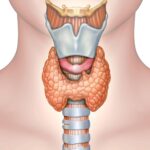- Home
- GYNECOLOGY/OBSTETRICS
- Obstetrics
- Induction of labor

Labor refers to regular phasic uterine contractions that increase in intensity and frequency, leading to dilatation of the cervix. Induction of labor, therefore, is the deliberate effort to initiate labor before its spontaneous onset.
Indications of induction of labor
- Prolonged pregnancy- usually past 41 completed weeks
- Premature rupture of membranes(PROM)
- Hypertensive disorders, e.g., preeclampsia
- Cholestasis in pregnancy
- Chronic renal disease
- Antepartum hemorrhage of unknown origin
- Fetal death
- Fetal growth restriction(FGR)
Contraindication of labor induction
- History of classical cesarean section- high risk of uterine rupture if labor is induced
- Active genital herpes or any other TORCH microorganisms
- Placenta previa
- Vasa previa
- Malpresentaion of the fetus
- History of multiple uterine scars
- Fundal uterine surgery
- Heart disease
Methods of labor induction
Mechanical induction
- Membrane sweep- stimulation of the fetal membranes digitally by the physician
- Mechanical dilators
- Transcervical balloon catheter
Medical– use of uterotonic agents
- Prostaglandin
- Can be gel, tablet, or pessaries
- Misoprostol is contraindicated in women with a history of cesarean section
- Misoprostol- mifepristone can be added in case of fetal death
- Oxytocin -to augment labor
Surgical
Amniotomy
- Artificial rupture of the membranes
- Amniotomy has high success rates
- The method can cause complications such as amnionitis and cord prolapse
Complications
- Failure of induction
- Uterine hyperstimulation- can lead to fetal distress and meconium-stained liquor
- Uterine rupture
- Cord prolapse- a significant complication in amniotomy
- Infection- dues to iatrogenic inoculation
- Pain- epidural analgesia is recommended












